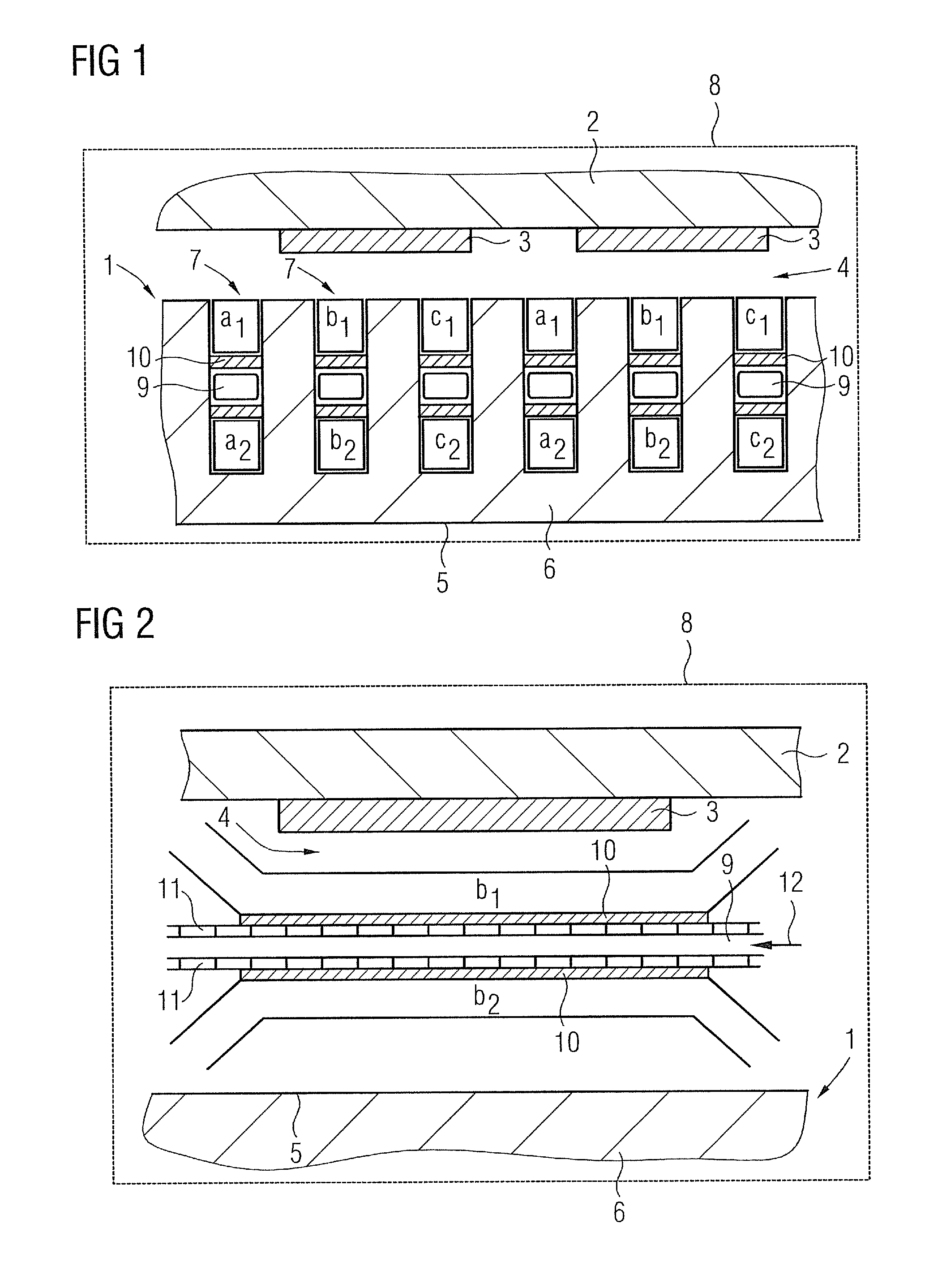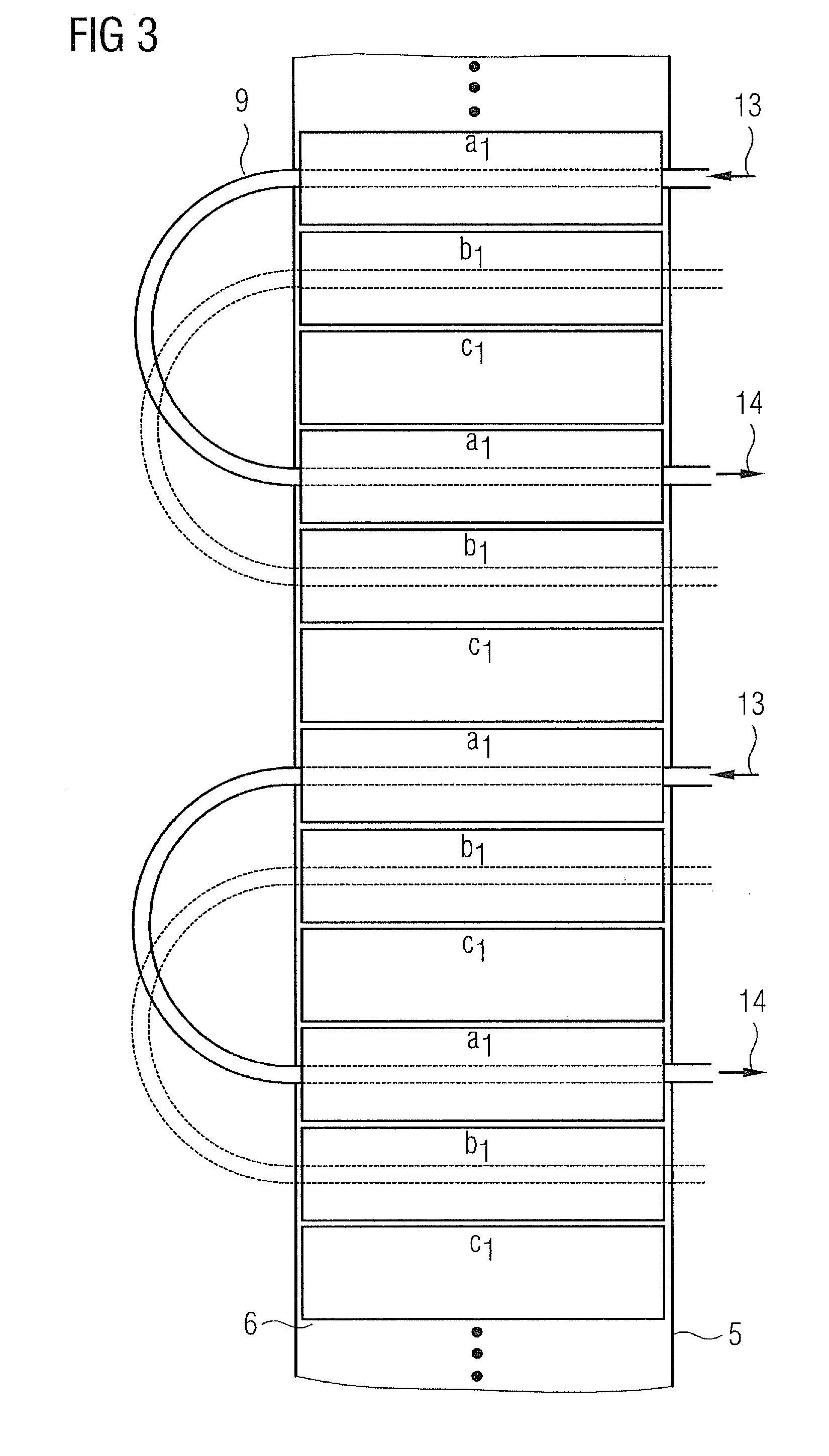Stator arrangement
a stator and arrangement technology, applied in the direction of cooling/ventilation arrangement, wind energy generation, electrical equipment, etc., can solve the problems of high temperature gradient, high temperature gradient, high temperature gradient, etc., and achieve the effect of simple constructive design and good cooling performan
- Summary
- Abstract
- Description
- Claims
- Application Information
AI Technical Summary
Benefits of technology
Problems solved by technology
Method used
Image
Examples
Embodiment Construction
[0024]FIG. 1 shows a principle cut-out front view of a stator arrangement 1 according to an exemplary embodiment of the present invention and a respective rotor 2. The rotor 2 comprises several permanent magnets 3 and surrounds the stator arrangement 1, whereby an air gap 4 is provided between the stator arrangement 1 and the rotor 2. Generally, a reverse arrangement, that is the stator arrangement 1 surrounding the rotor 2 is applicable as well.
[0025]The stator arrangement 1 comprises a stator 5 having a stator yoke 6 particularly built of several laminated stacked metal plates (not shown). The stator yoke 6 comprises a number of axially extending stator slots 7.
[0026]The stator arrangement 1 and the rotor 2 are components of a three-phase electric machine 8 indicated by the rectangle. The electric machine 8 has a double-layer configuration, that is each slot 7 comprises two layers or sets of stator windings.
[0027]The notation of the respective sets of stator windings is as follows...
PUM
 Login to View More
Login to View More Abstract
Description
Claims
Application Information
 Login to View More
Login to View More - R&D
- Intellectual Property
- Life Sciences
- Materials
- Tech Scout
- Unparalleled Data Quality
- Higher Quality Content
- 60% Fewer Hallucinations
Browse by: Latest US Patents, China's latest patents, Technical Efficacy Thesaurus, Application Domain, Technology Topic, Popular Technical Reports.
© 2025 PatSnap. All rights reserved.Legal|Privacy policy|Modern Slavery Act Transparency Statement|Sitemap|About US| Contact US: help@patsnap.com



